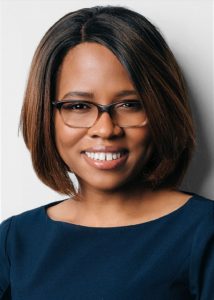Optimizing Cloud Costs: 4 Keys to Ensuring the Most Value For Your Budget
Perhaps you are one of the business leaders considering moving your servers to “the cloud.” After doing due diligence, you choose a provider and consider the work complete. Right? Not quite. It’s not enough to handpick a provider. Whether it’s called cloud cost management, cloud optimization, or a different term, it’s crucial to optimize costs by selecting the right products at the lowest possible price. The following are key practices for doing just that.
Use A Cross Department Approach.
It’s tempting to just put several trusted IT engineers and developers in charge of technology decision-making, but it will likely mean a product(s) that won’t work well across company departments. For instance, a cloud product that IT likes because it works well for them, may be a poor fit for accounting.
Instead, maximize business value by getting engineering, finance, technology, and business teams to collaborate on data-driven spending decisions. Forming a “best practices” or a “center of excellence” group ensures that everyone at the company, not just a select few, takes ownership of cloud usage.
Utilizing a cross-department approach is the idea behind the evolving cloud financial management discipline known as FinOps, so named as it combines Finance and DevOps to stress the importance of communication and collaboration between business and engineering teams.
Understand Current Utilization
Overprovisioning, the act of deploying, and paying for, resources that a firm does not need, represents a technical challenge at any organization. Understanding current utilization can help avert this problem. Purchasing a top-of-the-line cloud server might sound tempting, but is it really what your company needs? Does your firm’s workload require a heavy-duty-server, or would it be a nice-to-have that wil
l cost more than is necessary? On the flip side, if corporate workload is progressing faster than the current server can handle, an upgrade to a top-of-the-line product might be a wise purchase. Understanding current utilization brings a level of accountability to cloud expenditures.
Leverage Automation
This practice takes utilization a step further. Does automation need to be ongoing, 24/7? Or can automation be “leveraged” more efficiently, and thus save money? If the automation is not needed, operations aren’t as efficient as they could be.
Rather than running all day, every day, automation might be better utilized during a specific high-traffic time of the day – for instance, when many credit card transactions come in early each morning for processing. If automation is only needed during early morning hours, it does not make sense to have this feature operating 24/7. In a case like this, it makes sense to “leverage” automation with the provider.
Utilize The Payment Model That’s Right For Your Company
The options usually involve purchasing in advance versus paying as you go. If your company has a steady workload that does not change much over time, a fixed price paid in advance to a cloud provider makes a lot of sense.
On the other hand, perhaps your firm is a recent start-up with very uneven workflow, maybe depending on the time of year or current economic climate. In such cases, paying as you go would be a better choice.
Summary
Utilizing a FinOps approach and forming a central best-practices group – thus creating a cloud center of excellence – will result in greater team collaboration; “ownership” of cloud usage; decisions driven by the business value of cloud; take better advantage of variable cloud costs, and maybe even increase revenue.
About the Author, Susanne Tedrick
 Susanne Tedrick is a certified Microsoft Technical Trainer. In her work, Susanne delivers skills-based, outcome-driven training on the Azure platform for some of Microsoft’s leading enterprise clients Susanne is the author of the critically acclaimed “Women of Color in Tech” and the upcoming “Innovating For Diversity”. For more information, please visit: www.SusanneTedrick.com. A portion of this feature was excerpted from the FinOps Foundation
Susanne Tedrick is a certified Microsoft Technical Trainer. In her work, Susanne delivers skills-based, outcome-driven training on the Azure platform for some of Microsoft’s leading enterprise clients Susanne is the author of the critically acclaimed “Women of Color in Tech” and the upcoming “Innovating For Diversity”. For more information, please visit: www.SusanneTedrick.com. A portion of this feature was excerpted from the FinOps Foundation






